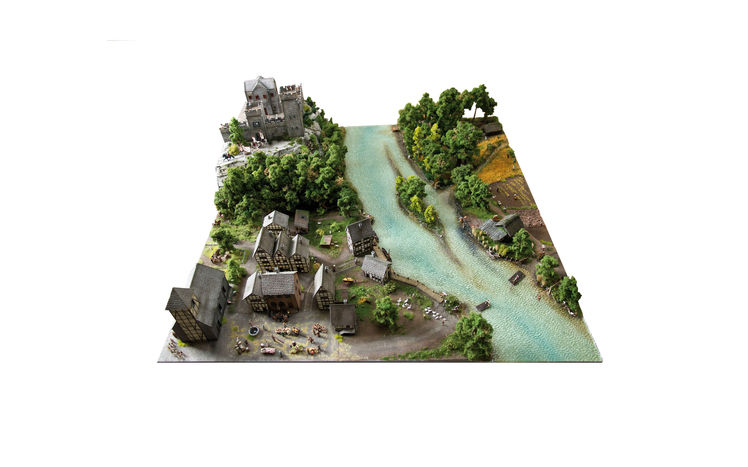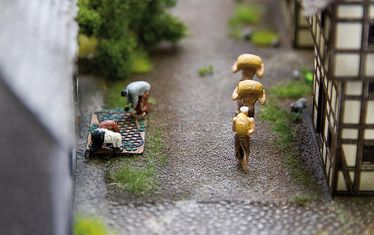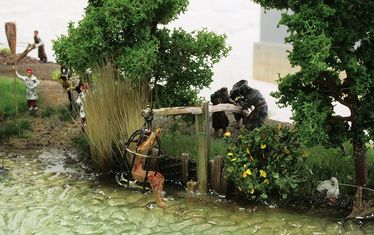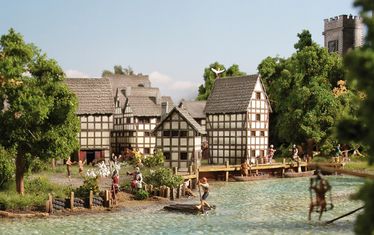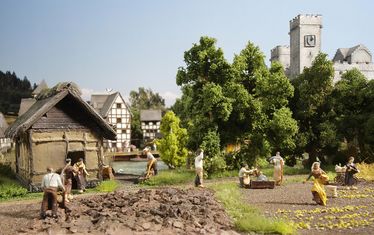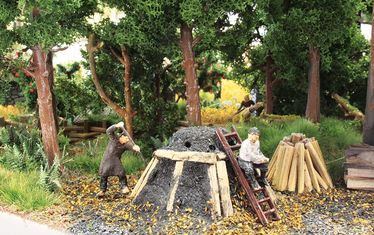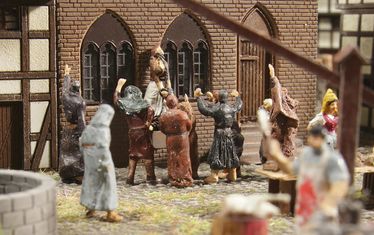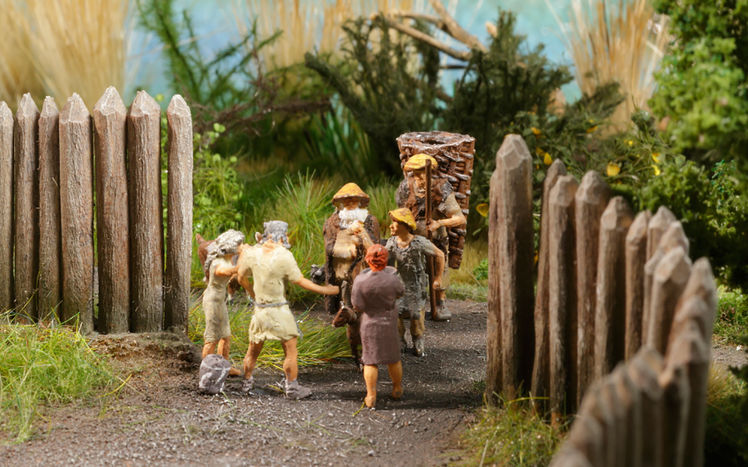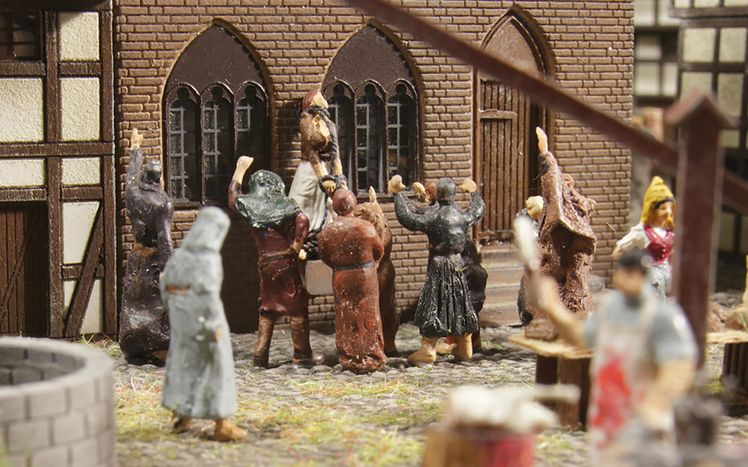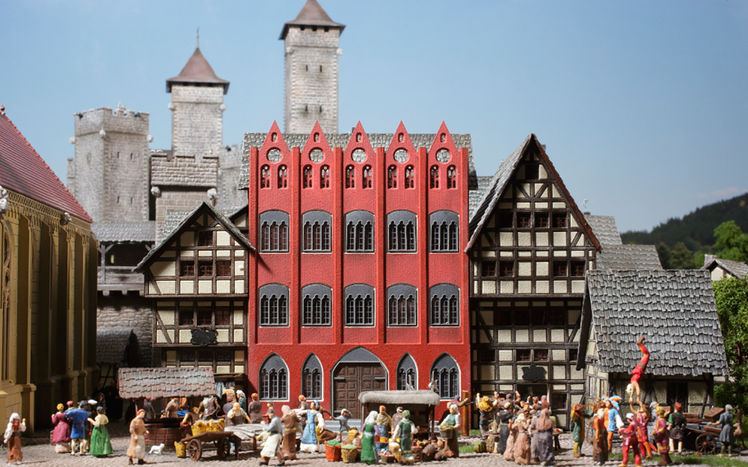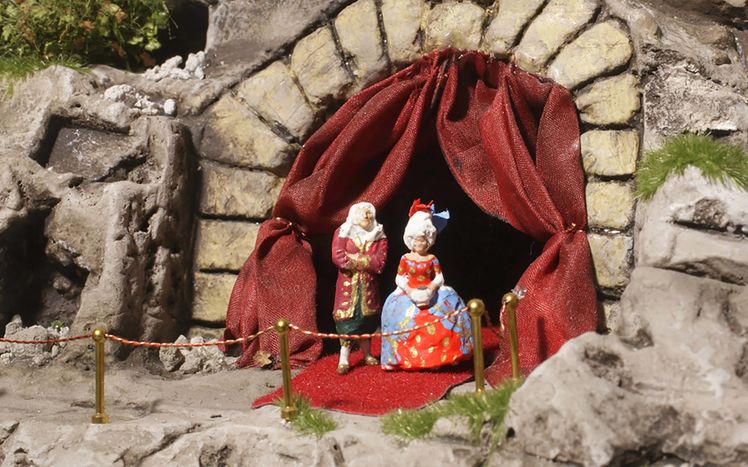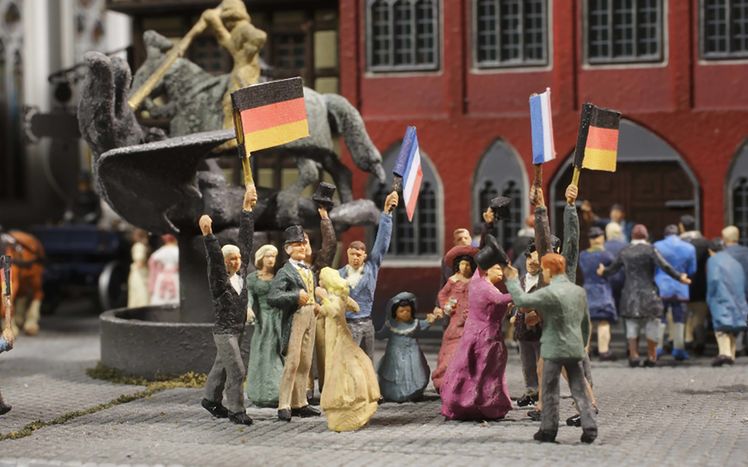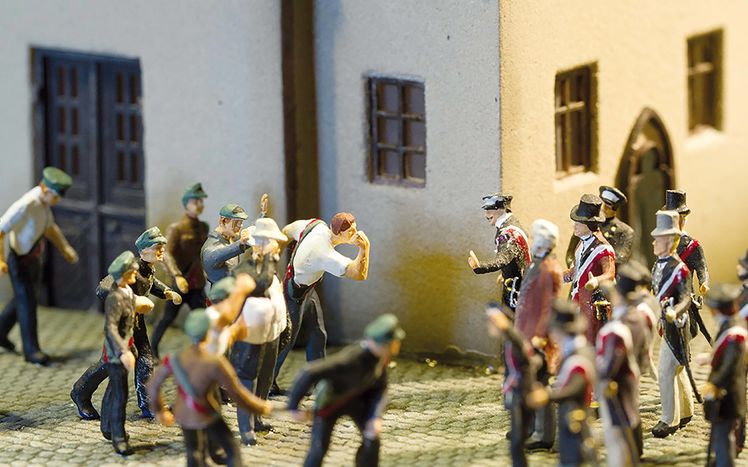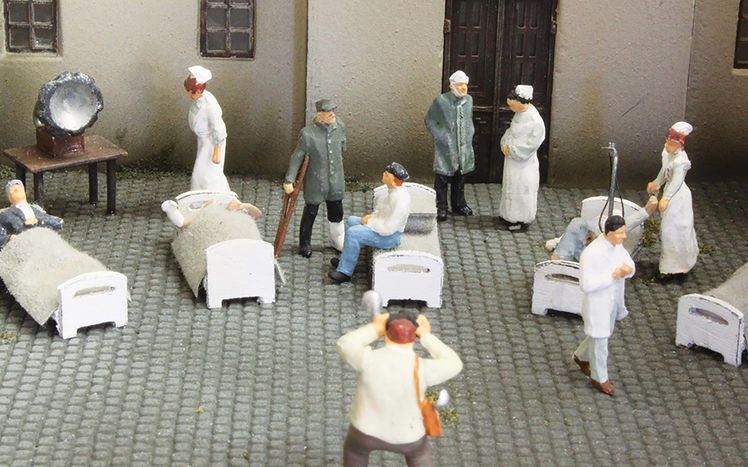770 - 1330
Medieval Europe formed clear social classes and a Christian culture.
The Town
The settlement has developed into a small town, centering in the market place and the church. Within the town walls, both, vegetables and live stock are being cultivated and traded. Thus, townsmen can provide for themselves on the one hand, and on the other, new trading goods are reaching the town. Besides the river, a public well supplies water.
The Lord of the Castle
The territory and the forest are property of the lord, who has raised a fortress on the hill towering over the town. Short of a small share, peasants have to turn over their harvest, and are obliged to additional work, for example, as servants. With the ownership of the forests, the lord has the lone right to hunt. Being the judge, he can inflict punishments for any crimes, even with the punishment of death.
